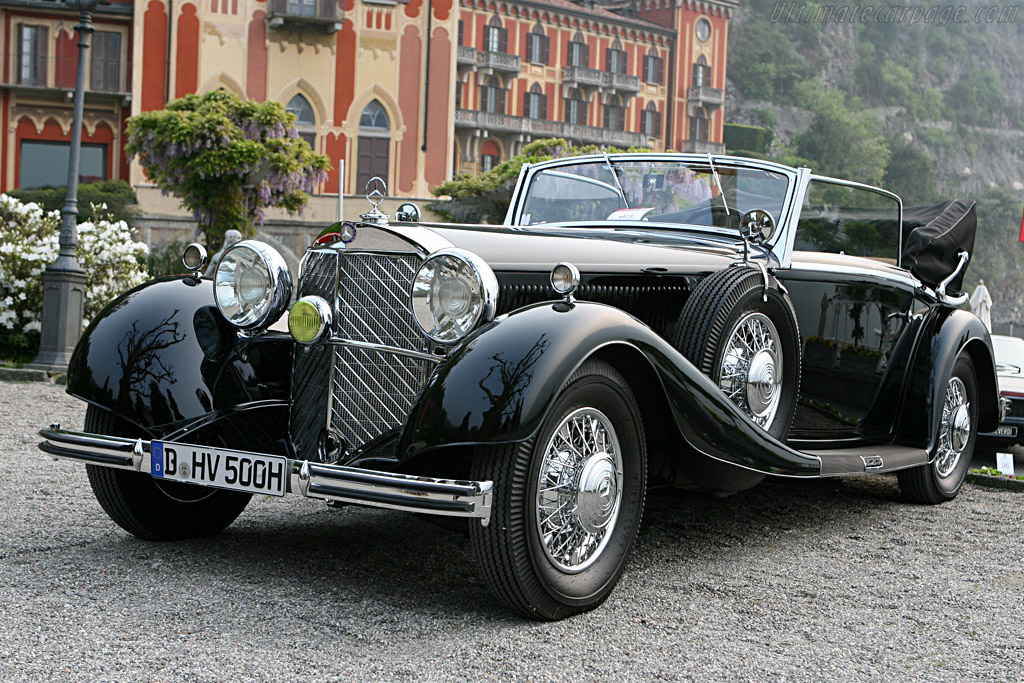The Mercedes-Benz 500K was a grand touring car built by Mercedes-Benz between 1934 and 1936 and first exhibited at the 1934 Berlin Motor Show.
They were distinguished from the 500 saloons by the “K” for Kompressor (German translation: Supercharger). It succeeded the Mercedes-Benz 380, an eight-cylinder powered automobile introduced at the Berlin Motor Show in February 1933 and withdrawn from production during 1934.
The Mercedes-Benz 500K was hand-produced and built exclusively according to the wishes of their customers, with a construction time of five months.
Introduced as the successor to the Mercedes-Benz S Series, a much-raced car which debuted in 1927 and production ceased in 1933, it bore the nickname, the ‘White Elephant’.
The Mercedes-Benz 500K Cabriolet C was a highly sophisticated touring car with a supercharged in-line, eight-cylinder OHV engine and a fully independent suspension system. It had an outstanding balance of design and performance.
Between 1934 and 1936, Mercedes built some 300 of these models. In those days, it was common practice to have a renowned coach-builder design the body of a luxury car. However, Mercedes-Benz did the coachwork at its Sindelfingen Plant in this case.
To meet the individual wishes of the demanding customers, Mercedes offered three different chassis and eight bodies.
The 500K and 540K models found instant popularity with the Nazi hierarchy, with Goering, Goebbels and Ley favouring these models for their personal transport. The Mercedes built the 500K and 540K cars exclusively and unashamedly for the rich and famous.
One such celebrity was Count Curt Heinrich Eberhard Erdmann Georg von Haugwitz-Hardenberg-Reventlow, a Danish nobleman based in London who, in 1935, married Woolworths heiress and socialite Barbara Hutton, one of the worlds wealthiest women.

